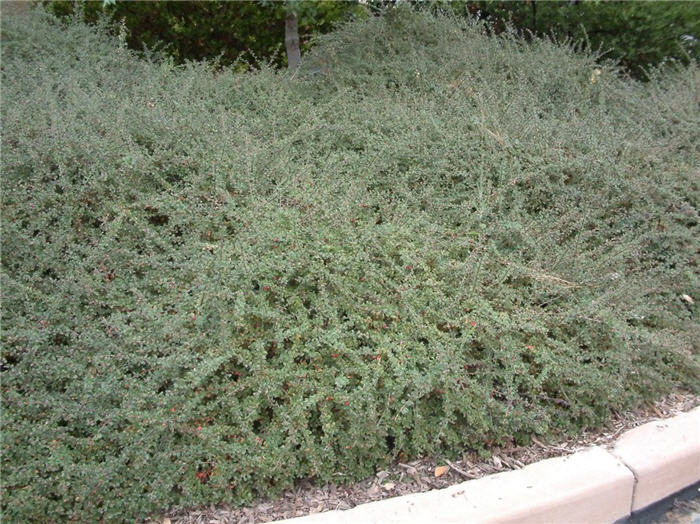| Botanical Name: Cotoneaster congestus 'Likiang' | |
| Common Name: Likiang Cotoneaster |

-
Anatomy
-
Culture
-
Design
Plant Type
Broadleaf Evergreen, Shrub, Ground cover
Height Range
1-3'
Flower Color
Pink
Flower Season
Spring
Leaf Color
Dark Green, Light Green
Bark Color
Brown
Fruit Color
Red
Fruit Season
Winter, Fall, Persistent
Sun
Full, Half
Water
Low
Growth Rate
Slow
Soil Type
Sandy, Clay, Loam, Rocky, Unparticular
Soil Condition
Average, Poor, Well-drained, Dry
Soil pH
Neutral, Basic
Adverse Factors
n/a
Design Styles
Formal, Mediterranean, Ranch, Spanish, Woodland
Accenting Features
Fall Color, Showy Flowers, Unusual Foliage
Seasonal Interest
Spring, Fall
Location Uses
Shrub Border, Foundation, Parking Lot, Raised Planter, Walls / Fences, With Rocks
Special Uses
Cascade, Erosion Control, Mass Planting
Attracts Wildlife
n/a
Information by: Stephanie Duer
Photographer:
Photographer:
-
Description
-
Notes
This slow growing Cotoneaster grows to about 3' tall and wide, with downward-curving branches and dark green foliage with the lighter undersides. Pink flowers appear in spring, followed by small red berries. This is a great ground cover around rocks and makes a good bonsai plant. This shrub does better in full sun for flower and fruit production. It is drought tolerant once it's established. Evergreen.
Grow in any well-drained soil in full to part sun. Wide range of soil tolerance, and pH tolerant. Branches root where they touch the ground. Cotoneaster get very woody if sheared, so prune selectively to control size and shape; see Guides.